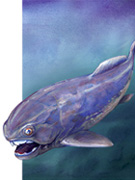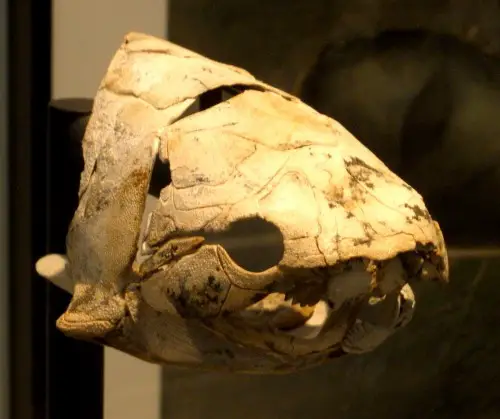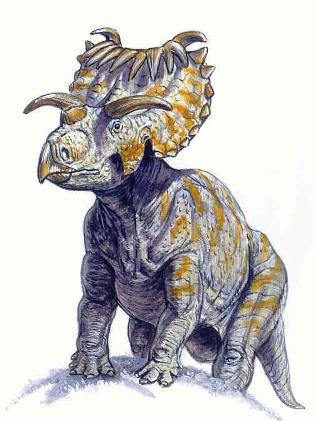Eastmanosteus
The Eastmanosteus is an ancient creatuer from the dinichthyid placoderms genus. It is closely related to the Dunkleosteus which was a giant fish, but with distinctive characteristics. These include having a more zig-zagging structure on the roof of the skull, a tuberculated bone ornament, and a nuchal plate that was much differently shaped to the Dunkleosteus’.
It is thought that the Eastmanosteus was an active predator due to its powerful jaws that have sharp cutting edges. Fossils of this creature have been found in many parts of the world, and all of these fossils have dated back to the Middle to Late Devonian period. They are considered as being medium to large sized fish, as the subspecies of Eastmanosteus pustulosus and Eastmanosteus licharevi are only about 3 meters long. The best fossil found was the Eastmanosteus calliaspis which was found complete with its exoskoleton and soft tissue traces. This was found in Australia.
As one can imagine, there were several species of Eastmanosteus. They are:
Eastmanosteus calliapsis
This was found in the Gogo Formation in the north-western region of Western Australia. As mentioned above, this is the most well known member of its genus due to its well preserved and articulated skulls and trunk armours in museum collections. In addition, there was evidence of muscle fibres, circulatory structures, and nerve tissues making it the best preserved gnathostome soft tissue. The largest known skull of this species is 272mm long, which suggests that the body length it 1.5 meters in total.
Eastmanosteus licharevi
Described by Obrucheva in 1956, this Russian Eastmanosteus species is poorly known. What we do know about it is that it was originally described from an isolated nuchal plate that was found in the Frasnian of Timman. It was then further described with additional fossil findings from Famennian of Lipetsk.
Eastmanosteus lundarensis
This species is one of the earlist and most completely known members of its genus species. It was described by Hanke, Stewart, and Lammers in 1996 as being a medium sized species from the Eifelian era and was found in south-central Manitoba in Canada.
Eastmanosteus magnificus
This creature was previously assigned as a Dinicthys and a Dunkleosteus until further research found it belonged to the Eastmanosteus species. It was described in 1918 by Hussakof and Bryant, based on an almost complete head shield from the Late Devonian era from the present state of New York, USA.
Eastmanosteus pustulosus
From the Middle-Late Devonian USA (current Wisconsin, Iowa, Michigan, New York State) and modern-day Poland, this species was originally confused as part of the Dinichthys genus. It was described by Eastman in 1897.
Eastmanosteus yunnanesis
Originally described by Wang in 1982, the earliest fossil found dates back to the Middle Devonian period of the Yunnan Province in China. It was originally thought to be a Dunkleosteus.
Eastmanosteus species 1
This species is fairly undescribed and unknown. It was described by Janvier on well preserved material from Kerman in eastern Iran.
There are other species that have been included within the Eastmanosteus genus. These species have been found in Morocco, the USA, and Russia. However, they are either placed in a different genera or are thought of as being indeterminate dinichthyids.




